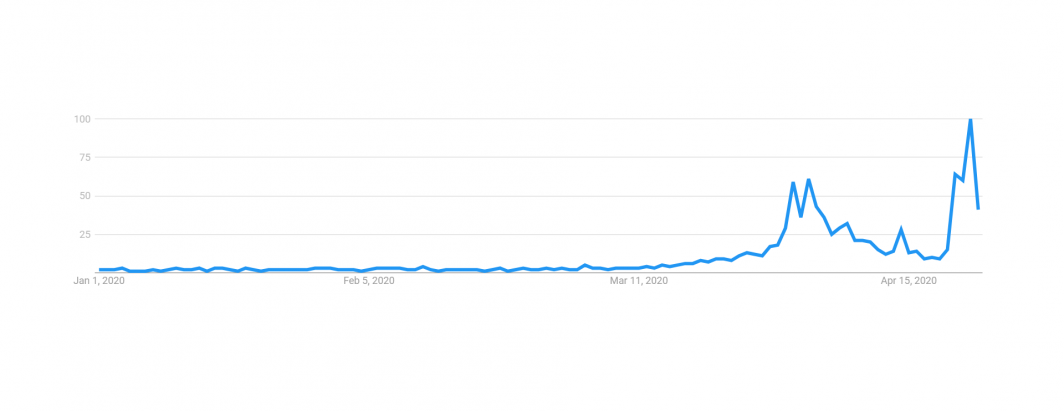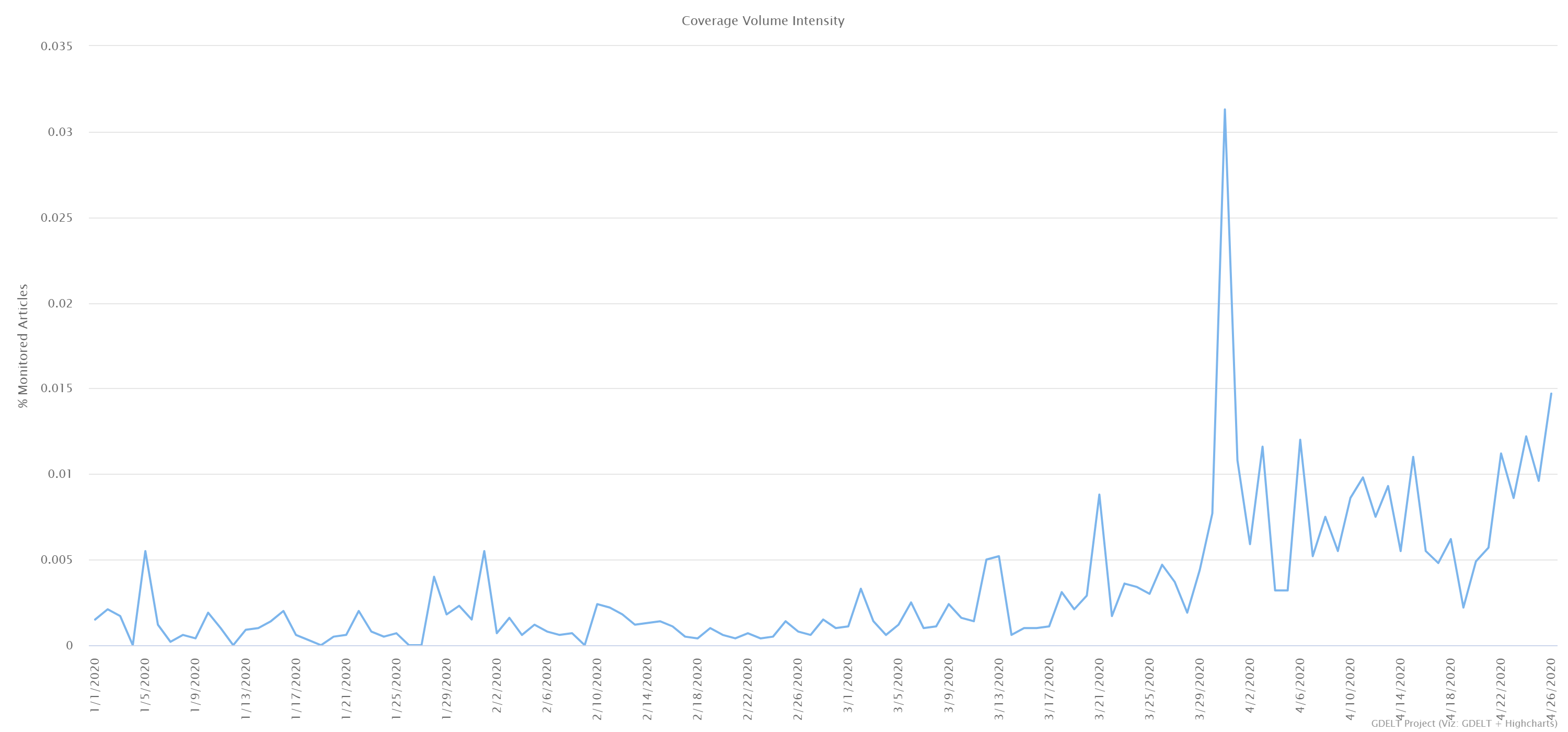
Media coverage has been behind many of the panic buying behaviors of the Covid-19 crisis, from toilet paper to N95 masks, with bursts of news coverage preceding bursts of search interest and mass purchasing. With an op-ed in the New York Times this past Monday calling for the public to use oximeters at home, how is media coverage driving interest in these devices?
According to one measuring firm, US purchases of pulse oximeters (which most of the public are largely unfamiliar with) soared on January 20th when the first US cases were reported, reflecting early adopters with the medical knowledge to both know what a pulse ox is and to recognize its potential utility for a SARS-like respiratory ailment. Purchases jumped again in mid-February and again in early March.
What about search interest? The timeline below shows US Google searches for the Google Topic "Pulse oximeter" from the start of this year through present. Searches begin to take off in mid-March and search around March 31st after media personality Andy Cohen urges the public to purchase them. Search interest steadily declines until last week's New York Times op-ed, after which they surged once again and have decreased steadily in the days since.
Interestingly, the Jan. 20, mid-Feb. and early March surges seen in US purchasing data are not seen in US search data, confirming that these purchases were largely those already familiar with the devices and their usage. This reminds us that while search data is increasingly viewed as an early warning sign for all manner of emergencies, it does not necessarily capture the early movers that are already familiar with an issue, instead catching only when it goes mainstream.
Perhaps the most important finding from the graph above is that both surges were driven by media coverage, reminding us again just how critical media coverage is to driving public panic behavior during emergencies.
Besides those two major media stories, how has the overall media story around pulse oximeters played out? The timeline below shows worldwide online news mentions of the devices. Here the late January surge seen in purchase data is visible, along with the mid-Feb. and early March peaks. In this case, media coverage is far more similar to ground truth purchasing data than search interest. Late Feb. is when media coverage began to ramp up and other than a few peaks and valleys it has increased linearly ever since.

